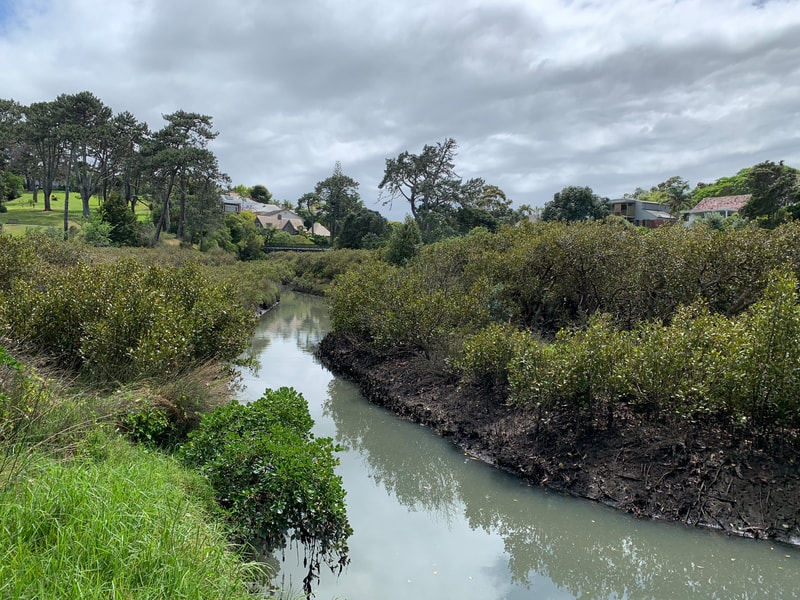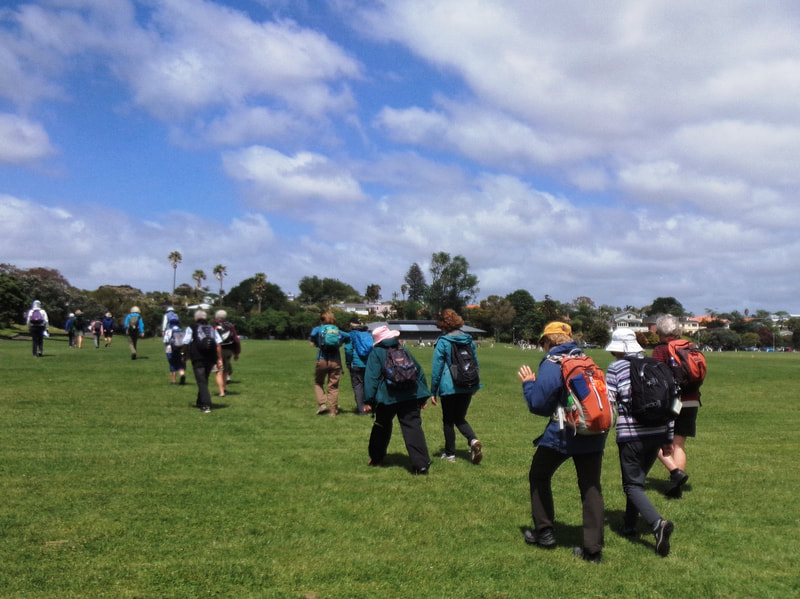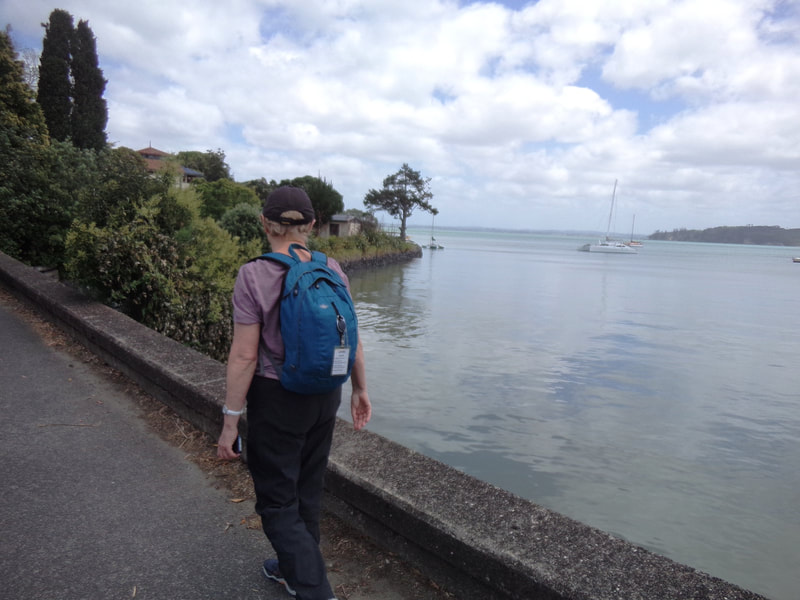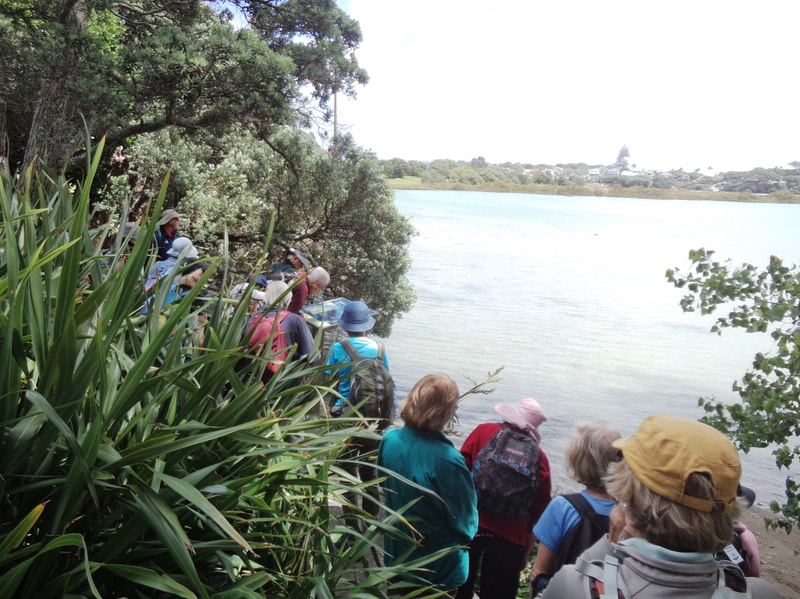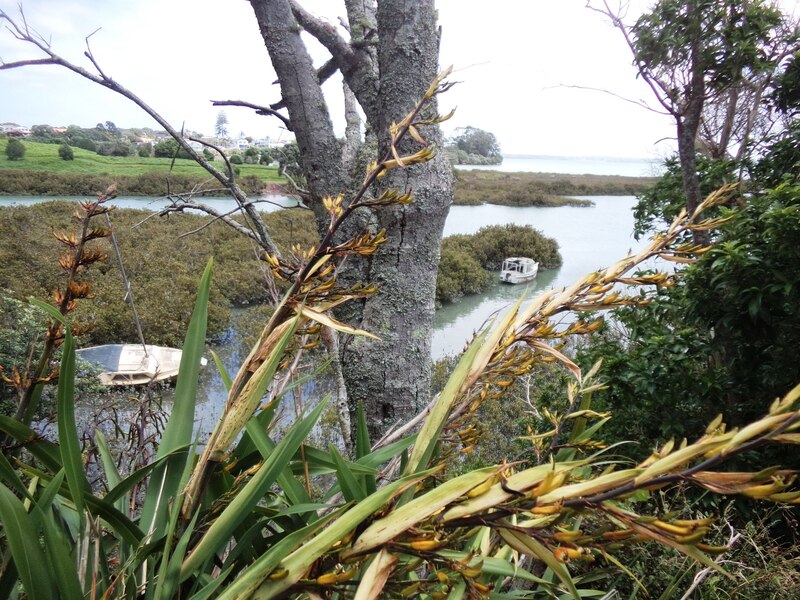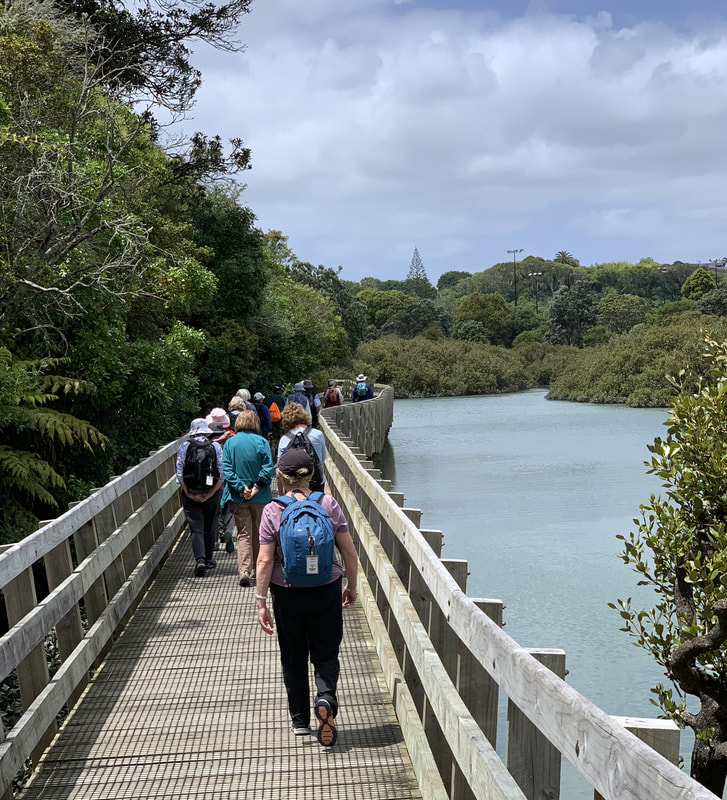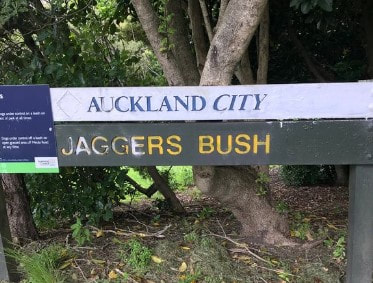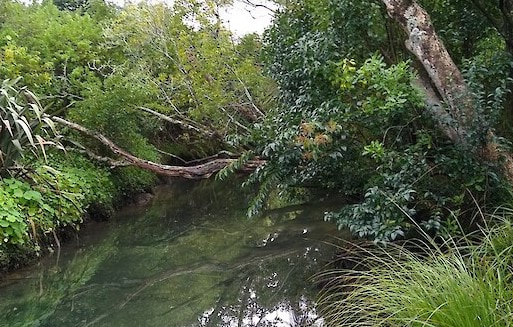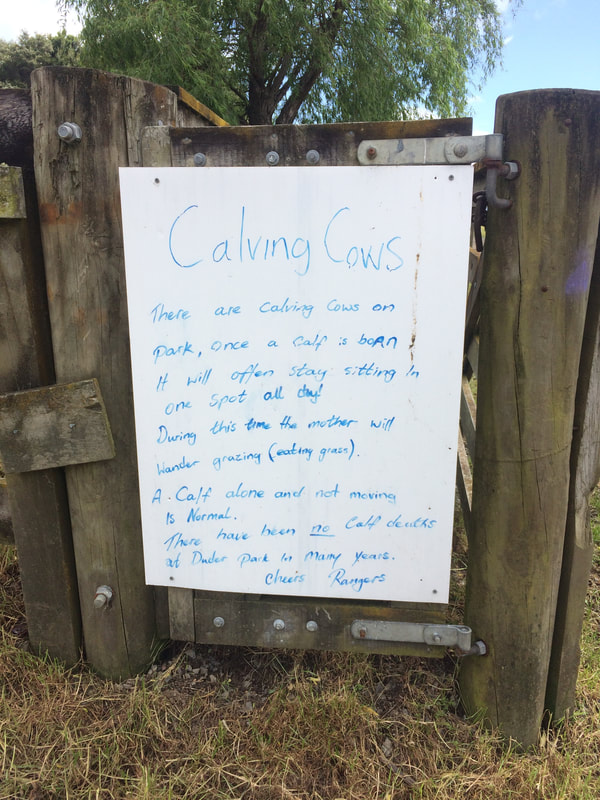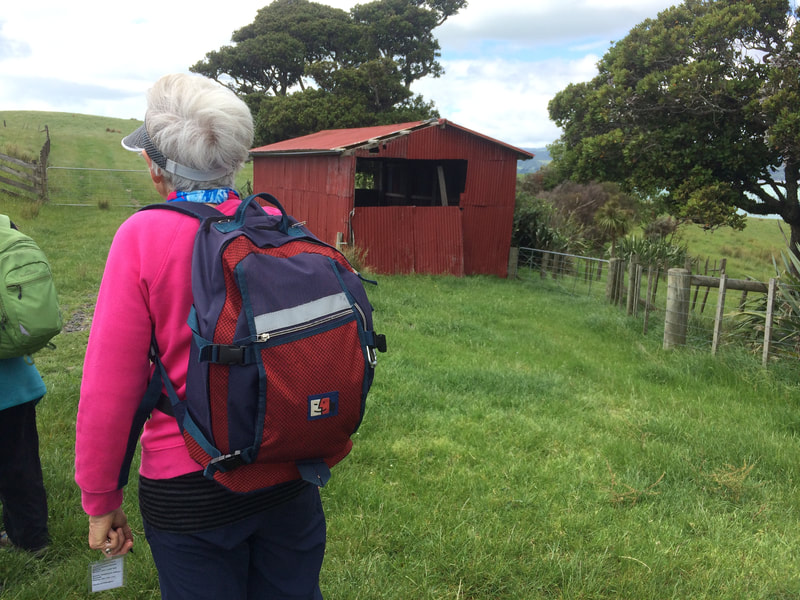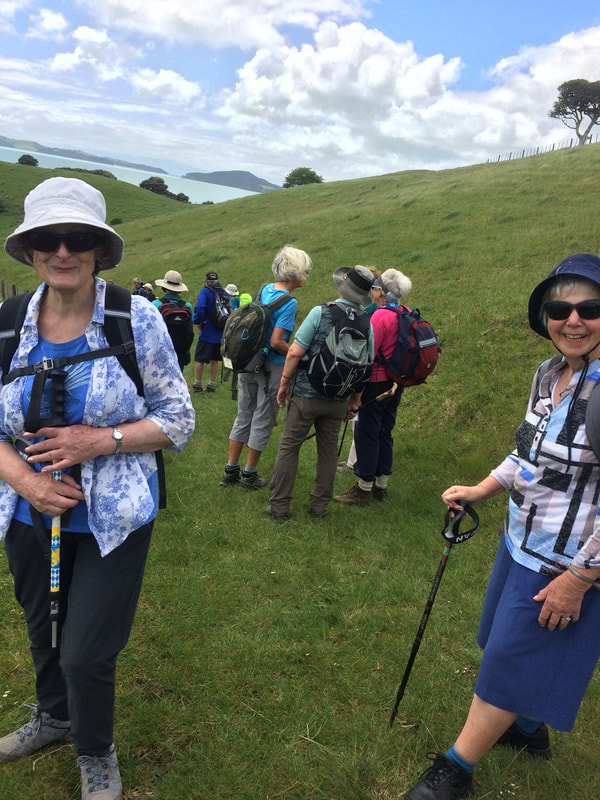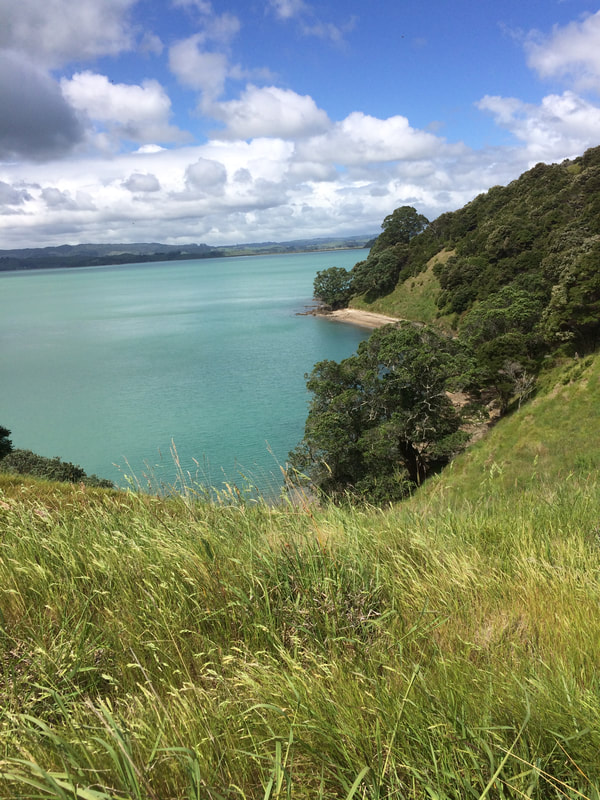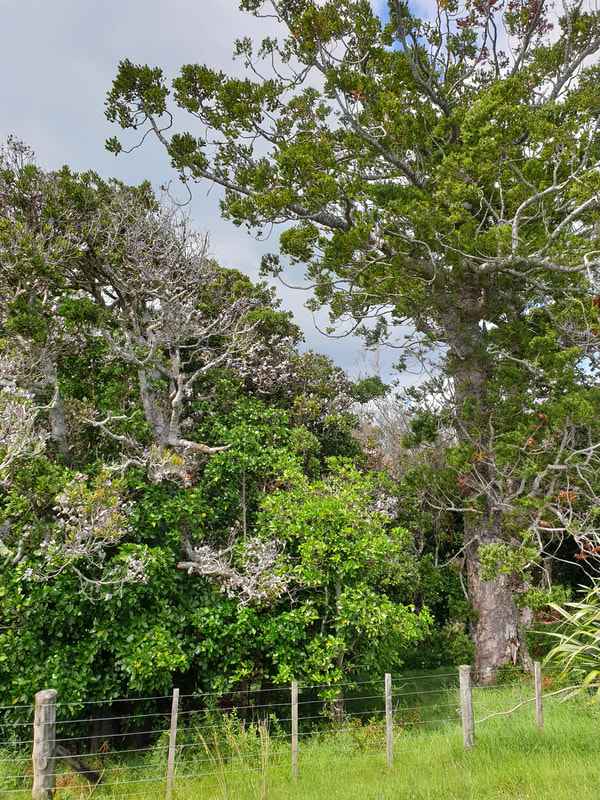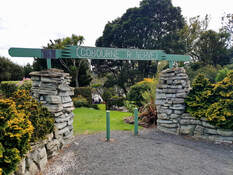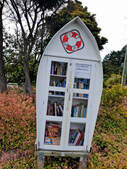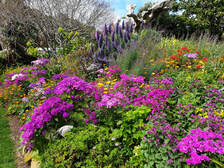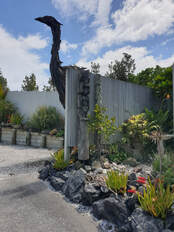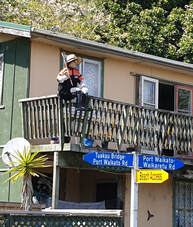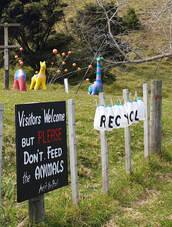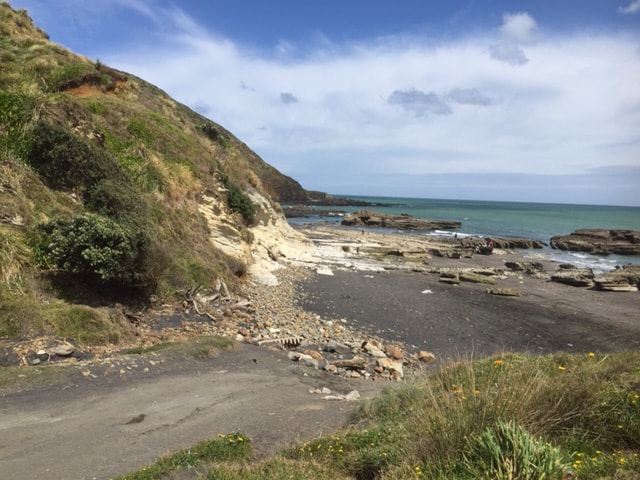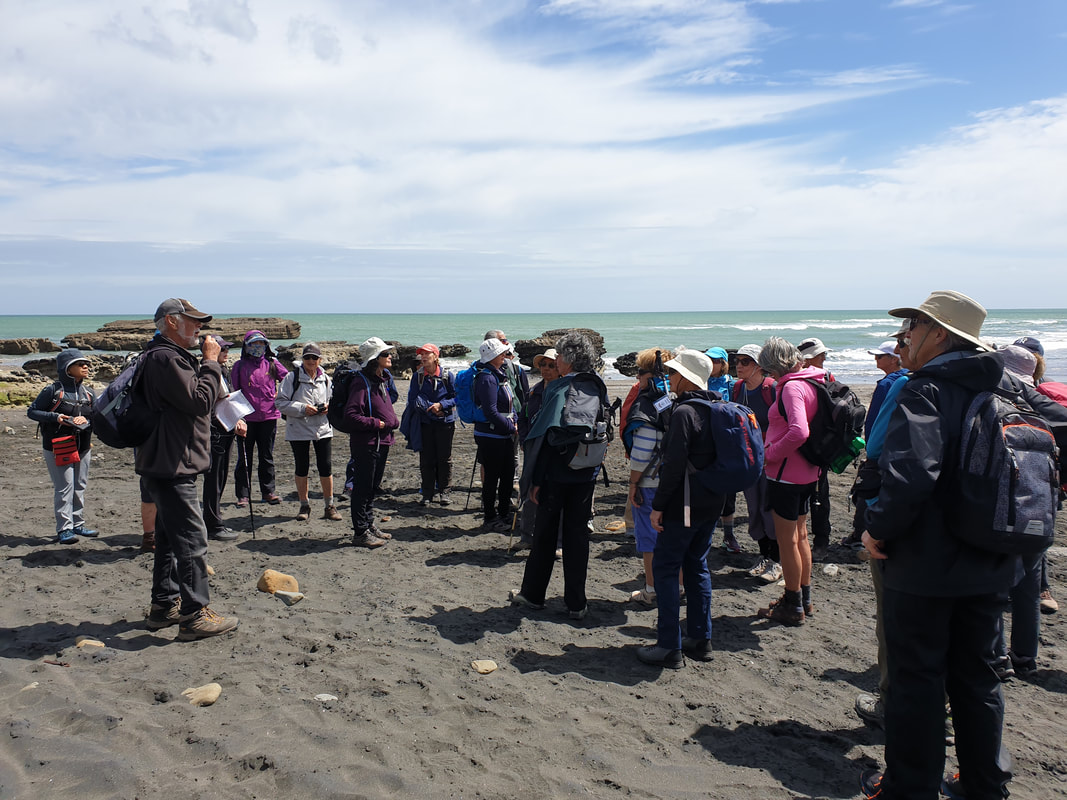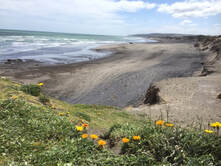Trip Reports: October - November 2020
22 November - Cox's Bay, Weona-Westmere Walkway, Jaggers Bush
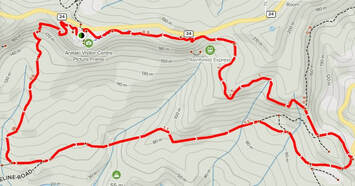
Following the club’s Annual General Meeting and morning tea, twenty-two of us took a short drive to a small suburban reserve on Wellpark Avenue where we started our loop walk (red dot).
Through a little native bush and across a bridge found us exiting onto Maxwell Avenue. We then made our way to Livingstone Street and headed down to one of the boardwalks leading into Cox’s Bay Reserve. A couple named Cox started market gardening here in the early 1840’s. There was also significant industrial development, with a brick factory in 1860 and in 1899 the Cashmore Brothers set up a steam-powered sawmill beside the creek below West End Road.
Through a little native bush and across a bridge found us exiting onto Maxwell Avenue. We then made our way to Livingstone Street and headed down to one of the boardwalks leading into Cox’s Bay Reserve. A couple named Cox started market gardening here in the early 1840’s. There was also significant industrial development, with a brick factory in 1860 and in 1899 the Cashmore Brothers set up a steam-powered sawmill beside the creek below West End Road.
In 1909, twenty-eight acres of the tidal mudflats were vested as a Domain. Then in the 1940’s reclamation began as a refuse soil tip. Today the area is well used as playing fields and we made our way to the cricket pavilion, a great spot to eat our lunch.
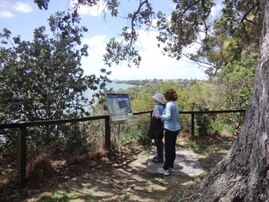
Our next stop, Westmere Park at the end of Tirotai Crescent. Great views to the wider Waitemata Harbour, Meola Reef Reserve and the Pt Chevalier Peninsula.
Signage here explains how the Waitemata Harbour was once a river valley, and Meola Reef is the end of an 11km lava flow from the Mt St John volcano in Epsom.
A few steps down the road we found a track that took us down to the Weona-Westmere Path that winds its way along the coastal fringes of Westmere. We passed many lovely homes with stunning views as well as several derelict boats languishing in the mangroves. Pohutukawa (Metrosideros excelsa), nikau (Rhopalostylis sapida), kowhai (genus Sophora) and cabbage trees (Cordyline australis) were prevalent. The southern portion of the path has a boardwalk that runs beside the Western Springs Creek.
We exited onto a busy Meola Road and immediately opposite we could see the sign directing us to the start of the track leading into Jaggers Bush. This is a thin strip of mixed native and exotic forest dropping down to Old Mill Road.
It is a Significant Ecological Area, and qualifies for Auckland Council funding for predator control. It is in the middle of a multi-year programme to remove willow and privet. A local restoration group are helping this along by regularly trapping for rats and possums and increasing numbers of tui, piwakawaka (fantails) and riroriro (grey warblers), along with kotare (kingfishers) and warou (welcome swallows) are being evidenced. An amazing piece of bush in such a developed area.
The large, strong walls of Auckland Zoo were immediately in front of us as we exited the track. We had to dig deep and find some inner strength ourselves as we tackled a short but steep stretch heading up Old Mill Road, and veering right to the old zoo entrance. Auckland Zoo was established by the Council in 1923 and the existing tramline was extended to the zoo gates to provide easy access for the public.

Around this same time, Auckland City Council, using a government loan, planned to build 65 cottages in this area for working families to “rent to buy”. Alas, the Depression came and less than half were built.
They were constructed of (low maintenance) concrete and several were visible on Old Mill Road and also in the loop of Westview Road - many had been beautifully restored.
They were constructed of (low maintenance) concrete and several were visible on Old Mill Road and also in the loop of Westview Road - many had been beautifully restored.
After an interesting and varied day it was time to head back down Wellpark Avenue to retrieve our cars.
Thanks to:
Leaders: Molly and Linda
Text: Linda
Photos: Katherine, Sue
Thanks to:
Leaders: Molly and Linda
Text: Linda
Photos: Katherine, Sue
8 November - Duder Regional Park & McNicol Homestead Museum
On Thursday the weather was stormy. It rained Saturday night, all night!
But Sunday 8 November was a beautifully sunny day. Perfect conditions for the 19 enthusiastic walkers who enjoyed the Duder Regional Park walking experience.
But Sunday 8 November was a beautifully sunny day. Perfect conditions for the 19 enthusiastic walkers who enjoyed the Duder Regional Park walking experience.
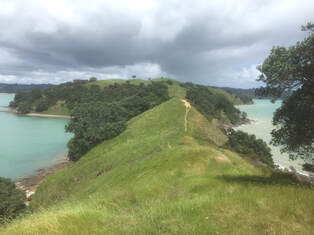
This park is located on the pohutukawa fringed Whakakaiwhara Peninsula.
The Ngai Tai Maori tribe settled here in the 14th century, taking advantage of the abundant food resources.
We walked in single file to the point - which extends out to the Tamaki Strait.
We had magnificent views of the Maraetai Hills, the Hunua Ranges and Hauraki Gulf Island.
The Ngai Tai Maori tribe settled here in the 14th century, taking advantage of the abundant food resources.
We walked in single file to the point - which extends out to the Tamaki Strait.
We had magnificent views of the Maraetai Hills, the Hunua Ranges and Hauraki Gulf Island.

On leaving this peninsula, we meandered over pasture land. Newly shorn lambs, and lambs with fluffy white coats curiously joined us as we crossed their pastures.
We then completed our loop, with a 45 minute walk through a patch of coast forest, mostly consisting of taraire, tawa, kanuka, puriri and karaka. Sadly many of the taraire are in a bad way due to last summer's drought.
Thank you to Janet and Sharleen (our leaders) for such an enjoyable day.
Photos: Frankie and Linda
Text: Janet
11 October - Port Waikato: River and Dunes
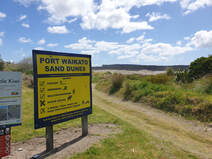
After being cancelled twice due to Covid-19, were we finally off to Port Waikato? YES! Forty-five of us had a great day at the Port. Some had never been there before, others not for many years.
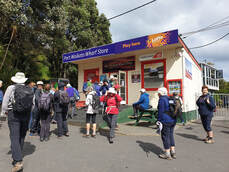 The Wharf Store
The Wharf Store
Once a mission station, then a garrison town and also a spa town, Port Waikato has an interesting and varied past. Some of this history is on display in a wonderful collection of old photographs in the tiny historic Wharf Store (1893).
Many of the photographs featured Caesar Roose, shipping pioneer and champion of the former Port Waikato Health Camp, now a school camp.
Many of the photographs featured Caesar Roose, shipping pioneer and champion of the former Port Waikato Health Camp, now a school camp.
A visit to Cobourne Reserve gave us the story of the Cobourne sisters, Florence and Daphne, who gifted their home and land to the community back in 1983. Enthusiasticaly developed and maintained by local volunteers, today's reserve is a burst of colour containing many great feature trees, and is the winner of many awards.
Views out over the dunes and rivermouth were our reward for a short climb where we also saw the old pilot's house and former regional hospital building, plus a fetching little dog with some clever tricks!
As our walk continued we spotted several examples of the quirky, artistic and laid-back flavour of the streets here.
As our walk continued we spotted several examples of the quirky, artistic and laid-back flavour of the streets here.
Betty Bean's mobile cafe got a thumbs up from those who tried the coffee and excellent scones for lunch!
Then Sunset Beach beckoned and a short walk revealed the extent of the erosion taking place here (50 metres of coastline has been lost in the past decade). A new community hub/surf club centre is in place but several other buildings look precarious.
Lawrie shared his knowledge of the beach and told us about the various fossils he has seen in the rocks at various times.
A short clamber from the beach up through the dunes then along a sandy path surrounded by cheerful yellow lupins and daisies followed, and we arrived at the riverbank. By now the wind was starting to whip up the sand and it was decided that we would not continue the 2 km further to the rivermouth, but head back to Maraetai Bay Reserve.

Many thanks to Lawrie and Sharleen for a great day at "The Port"
Also to Jackie for the excellent notes to read on the bus.
Photos: Frankie & Sharleen
Text: Sharleen
